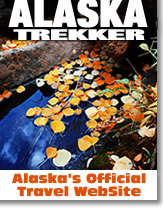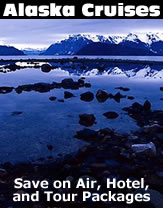Fish farms trying to confuse customers with "Naturally raised" salmon
The sign in front of the reddish six-ounce fillets promoted a different kind of salmon: "Naturally raised," it proclaims.
The accompanying brochure at Rosauers even features photographs of the fish's home -- the "pristine waters" of British Columbia's Clayoquot Sound, where the indigenous Chinook swims in spacious pens, untainted by antibiotics and hormones. "Organic certification pending," states the pamphlet.
The distinction perplexed Marjie Hill, a health-conscious shopper who sticks to organic and naturally raised foods. "This salmon was raised on a farm," the Spokane, Wash., resident pointed out. "How can it be organic?"
The differences between salmon -- wild vs. farm-raised, and now "naturally raised" -- have confused other consumers since the latter first arrived at grocery stores earlier this year.
At roughly $8 a pound -- about $12 less than wild Alaskan Copper River king and $2 less than the Copper River sockeye -- the "naturally raised" chinook presents an affordable alternative. It was also one of the few fresh salmon options until mid-May, when Alaska's salmon season finally opened.
"Copper River is just an absolutely beautiful salmon to eat, but you have to be rather wealthy to eat it more than once a year," said Neil MacLeod of Creative Salmon Co. Ltd., producer of the "naturally raised" fish.
About 2,000 to 3,000 pounds of Creative Salmon chinook are sold each week at Huckleberry's, Rosauers Supermarkets and Rosauers-owned Super 1 Foods -- the only local grocery stores that offer the fish, according to Matthew Fitterer, the Spokane branch manager of Pacific Seafood.
Despite its growing popularity, there's actually a catch to this "naturally raised" salmon: It's not really organic.
Right now, there's no such thing as U.S. Department of Agriculture-certified organic fish or seafood. "Currently, under the National Organic Program (NOP) there are no standards for organic fish, seafood and aquaculture," said Joan Shaffer, a USDA spokeswoman. "There are standards only for agricultural products from crop and livestock."
Jeff Egger of Egger's Better Meats and Seafood, refuses to sell the fish. Only fresh, wild salmon for his customers, he said. "I've laughed whenever I hear people say 'organic seafood' because farm-raised salmon is not organic," Egger said. "They're still in pens and their diets are controlled. That's not natural."
So why bother eating "naturally raised" fish? Is it really healthier and better than conventionally-raised farmed salmon?
Salmon connoisseurs and many health experts will advise you to always go with wild salmon. "We tell people that all wild-caught fish is superior to farmed fish," said Ronnie Cummins of the Minnesota-based Organic Consumers Association. (Note: Advocates for sustainable seafood have given the thumbs down to all farmed Atlantic salmon.)
A growing number of folks are also offering this alternative: If the wild option isn't available, they say, the organic/naturally-raised route might still be the better way to go.
To learn firsthand about Creative Salmon's fish, Fitterer of Pacific Seafood along with reps from Rosauers flew last summer to the tiny town of Tofino, B.C.
Although Pacific Seafood distributes both wild and farmed salmon, Fitterer was wary at first of the "naturally raised" fish. He also wasn't sure if there was a market for the product in Spokane.
"We did our homework," he said, explaining why the naturally raised chinook didn't show up at local grocery stores until late January -- six months after the trip to B.C. "We were nervous because we didn't know how the public would react. In the end, it was received quite well. Rosauers was giving people something they wanted."
Established in 1990, Creative Salmon is one of only a few farms worldwide that produce naturally-raised salmon. It drastically changed the way it farmed its chinook 4 1/2 years ago by eliminating the use of antibiotics and giving the fish more room to grow.
Like the United States, Canada also doesn't have organic standards for fish and seafood, although Creative Salmon and other founding members of the Pacific Organic Seafood Association (POSA) are working to change this in British Columbia. In the meantime, the company markets its fish as "naturally raised" instead of using the organic label.
When asked if this fish is considered better than other farm-raised salmon, MacLeod, Creative Salmon's director of business development, replied: "Truthfully, I can't say it's healthier for you, but I can tell you about our practices."
First, the chinook at Creative Salmon grow at lower densities -- eight to 10 kilograms per cubic meter compared to the 15- to 25-kilogram-ratio used by conventional fish farmers in British Columbia.
"We know that consumers want to buy fish that are treated properly," MacLeod said, noting how the company's staff of 45 includes four marine biologists who monitor the fish's environment. "We have happier and healthier fish that don't get sick, which means they don't need to be treated with antibiotics."
Creative Salmon also tries to differentiate itself from conventional fish farms by feeding its salmon a "100 percent natural fish meal diet," said MacLeod.
This can be a sticky point, especially to those who oppose all forms of farm fish. Some would argue Creative Salmon chinook aren't necessarily fed healthier food since there is no such thing as organic fishmeal.
When studies in 2004 found farmed salmon contained roughly 10 times more PCBs than the wild variety, researchers blamed it on the salmon feed. According to the study, farmed salmon are fed pellets of ground-up small fish that are rich in fish oil to enhance fat content. The same pellets contain pesticide residues and industrial byproducts that have spread widely into the environment.
MacLeod said the kings at the Creative Salmon farm are fed only organic grains and "the cleanest fishmeal," which are tested for contaminants.
"They don't raise them like regular farm salmon," Fitterer concluded after last summer's visit to the fish farm. "They're less stressed and the feed is all-natural. It tastes cleaner and fresher."
Jerry Young, chef and co-owner of Milford's Fish House, prefers wild salmon, but he's not opposed to serving the naturally raised kind, particularly when fresh Alaskan isn't readily available.
"There's a lot of farmed-raised salmon I'm not comfortable with," said Young, but he's open to the fish from Creative Salmon, which he and others say is an effort toward sustainability.
This past week, the chef offered three different kinds of king salmon on the menu -- Copper River, Columbia River and the naturally raised from British Columbia. The latter costs about $10 less than the other fish. "I like to give people an affordable alternative," Young said.
Chef David Blaine of Latah Bistro hasn't used the naturally raised salmon in his kitchen. "It's a step in the right direction, but it doesn't answer all the doubts people have about farmed salmon," he said, noting the ecological impact of fish farms and the potential dangers in the fishmeal.
Now, with the long-awaited debut of Copper River finally in full swing, consumers and restaurant diners seem to crave only the wild variety. On May 25 -- the first night Blaine put Copper River sockeye on the menu -- 29 percent of all the orders at Latah Bistro were for salmon. "That's unheard of for us," said the chef, who served the fish with a blackberry port mustard accompanied with local asparagus and a chive potato croquette.
MacLeod said Creative Salmon has received verbal endorsements from chefs, but few are willing to attach their names to any type of farmed salmon. It's still rife with controversy, acknowledged MacLeod, but he insists the studies are incomplete and the farm variety has its benefits.
Like other conventional farm salmon, the fish at Creative Salmon have a fat content of about 18 percent to 22 percent -- higher than most wild kings, except the ones caught from the Yukon and Copper River areas. More fat means a more forgiving fish that doesn't overcook as easily.
Unlike the Atlantic variety raised on fish farms, the naturally grown chinook doesn't have the orange tint. It's a darker pink, but one that still pales in comparison to the blushes and reds of wild king or sockeye.
While fish fans say its taste is more consistent than wild salmon -- which tends to vary depending on when the fish was caught and how far up along the river -- the naturally raised fish, like other farm salmon, lacks the firmness of the wild variety.
Some of the biggest Creative Salmon fans live in Japan, where 550,000 pounds are sold each year. The company's chinook has enticed Canadian and American consumers who buy about 2.9 million pounds annually.
Locally, Gary Johnson, the service meat supervisor at Rosauers, has sold about 30 pounds of the Creative Salmon chinook each week for the past few months. People who wouldn't otherwise buy farmed salmon are viewing the naturally raised salmon as a viable option, he said. "I prefer wild, although this is an excellent alternative," he said. "The organic salmon doesn't have all the negative throwbacks of farm-raised salmon."
Hill of Spokane, however, says "Thanks, but no." She'll pay the extra bucks for the wild salmon, even though she's retired on a fixed income. "Farm-raised is as far away from organic salmon as I can think of," she said.
Regardless of the differences, "all salmon is good for your health," MacLeod
said. "We're just part of the puzzle. We're trying to keep antibiotics out
of our fish and do it right for the environment."
Courtesy the Spokane Review


